Sigma Chi’s most important historical monument is the site of the Fraternity’s founding, located in Oxford, Ohio.
The small room, marked on the outside by a plaque between its two windows, is on the second floor of a building on the north side of High Street at the town square, and was the rooming place of Founders Runkle and Caldwell during their years of enrollment as undergraduates at Miami University. The badge of Sigma Chi was designed in this room and many of the earliest meetings of the Alpha Chapter were held here.
In 1973, the Founding Site was purchased and donated to the Sigma Chi Foundation by 41st Grand Consul William P. Huffman Denison 1911. It was renovated and rededicated in 1993. Additional remodeling, under the direction of architect and 20th Grand Historian, Eric Hansen, Cincinnati 1989, was completed for the 150th anniversary celebration in 2005.
To visit the Founding Site, please make arrangements with the site’s warden, Dustin Buecker at (859) 466-3809, or by using the contact form on this website.
You may also make arrangements to visit—either in advance or if you are in Oxford for the day (Monday through Friday) and have not made prior arrangements—by contacting Debra Nixon at Oxford Real Estate, 19 South Beech Street, Oxford, Ohio 45056, (513) 523-7253.
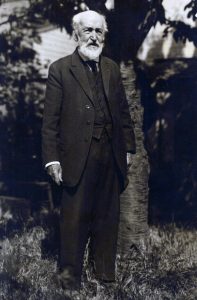 The Thomas Cowan Bell Memorial Monument was dedicated in 1933, at the Presidio in San Francisco, and honors the Founder who is remembered for demonstrating qualities of learning and powers of wisdom, particularly throughout his long and successful career in education.
The Thomas Cowan Bell Memorial Monument was dedicated in 1933, at the Presidio in San Francisco, and honors the Founder who is remembered for demonstrating qualities of learning and powers of wisdom, particularly throughout his long and successful career in education.
Bell instilled an atmosphere of friendship in the Fraternity and had, according to Founder Runkle, an expression on his face that made one instinctively reach for his hand.
His home at Oxford was with an aunt. Out of this circumstance grew the first chapter house of Sigma Chi,
as other early members of the Alpha Chapter lived either there or nearby, and ate at her well-stocked table.
Founder Runkle once wrote this of Bell: He was very studious, and stood well up toward the head of his class. With him, as with the rest of us, the Fraternity was a Holy of Holies.
After a career in education, culminating in several college presidencies, Bell retired to Oakland, Calif., where he renewed his ties with the Fraternity through the Alpha Beta Chapter, California–Berkeley, and its alumni.
Bell joined the three other surviving Founders—Caldwell, Cooper and Runkle—in 1905 at Sigma Chi’s Semi-Centennial Celebration in Oxford, Ohio, and in 1915 participated in the Grand Chapter at Berkeley.
Founder Thomas Cowan Bell entered the Chapter Eternal February 3, 1919, at age 86, the day after attending an Initiation at the Alpha Beta Chapter.
If you have questions concerning the Bell Memorial Monument, or you need information on visiting the site, please contact the site’s warden, Donald P. Copeland, Jr. at (415) 699-1519, or by using the contact form on this website.
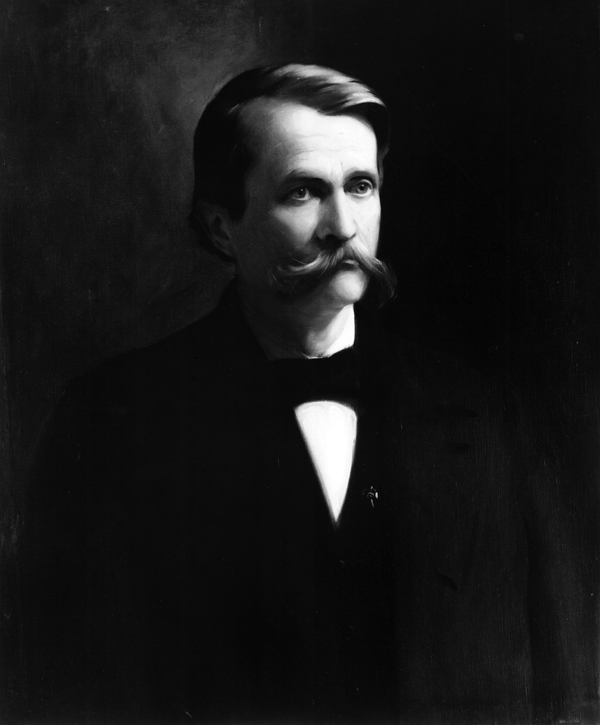 The James Parks Caldwell Memorial Monument was dedicated in 1930, in Biloxi Cemetery, Biloxi, Miss., and honors the Founder who is remembered for his fidelity to principle. This quality was most clearly exemplified by his refusal to win his own freedom by renouncing his allegiance to the Confederacy while being held prisoner by Union forces during the Civil War.
It was the room that Founders Runkle and Caldwell shared on the second floor of a building in Oxford’s public square that served as the birthplace of Sigma Chi.
Founder Runkle once wrote this of Caldwell:
The James Parks Caldwell Memorial Monument was dedicated in 1930, in Biloxi Cemetery, Biloxi, Miss., and honors the Founder who is remembered for his fidelity to principle. This quality was most clearly exemplified by his refusal to win his own freedom by renouncing his allegiance to the Confederacy while being held prisoner by Union forces during the Civil War.
It was the room that Founders Runkle and Caldwell shared on the second floor of a building in Oxford’s public square that served as the birthplace of Sigma Chi.
Founder Runkle once wrote this of Caldwell: I roomed with him and cared for him for more than a year. Our holidays were spent in the fields and along streams, one of us carrying a gun, or fishing rod, but Caldwell his copy of Poe or Shakespeare. Few of us escaped the pointed witticisms that flowed from his pen, nor ever lost the nicknames he gave us in his dramas.Following a military career forever marked by the incident (noted above) for which he is most remembered, Caldwell enjoyed a career which included serving as principal of Palmetto Academy in Mississippi, and practicing journalism and law in Mississippi, California and Wyoming. Founder James Parks Caldwell entered the Chapter Eternal April 5, 1912, at age 71.
If you have questions concerning the Caldwell Memorial Monument, or you need information on visiting the site, please contact the site’s warden, Ken C. Kvalheim at (251) 344-0193, or by using the contact form on this website. The cemetery’s phone number is (228) 435-6279.
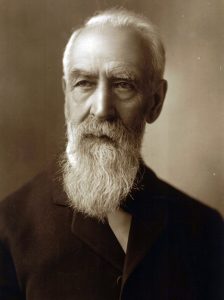 The Daniel William Cooper Memorial Monument was dedicated in 1924, in Allegheny Cemetery, Pittsburgh, and honors the Founder who, as the oldest of the Seven, is remembered for providing moral and spiritual foundations for the energetic group.
The Daniel William Cooper Memorial Monument was dedicated in 1924, in Allegheny Cemetery, Pittsburgh, and honors the Founder who, as the oldest of the Seven, is remembered for providing moral and spiritual foundations for the energetic group.
Founder Runkle once wrote this of Old Dan
Cooper: The little band was, if possible, overstocked with physical courage, nervous energy, and overleaping ambition to place The White Cross high in the heavens. Cooper was quiet, calm, earnest, true, conscientious and faithful. He was as the shadow of St. Peter passing by. We all sought him in his modest quarters, and no one came away without better resolutions and stronger hopes.
Upon graduation, Cooper entered Western Theological Seminary and graduated in 1859. He was ordained a Presbyterian minister, and held pastorates at four churches in Ohio and Indiana, and also engaged in special missionary service.
A noble preacher of the cross, Cooper was the last surviving Founder. He leaves not only the legacy of his spiritual lessons, but also the only existing Sigma Phi badge of the original seven, which is now on display in the Fraternity’s General Headquarters museum. Each Grand Consul now wears a replica of the famous badge.
Founder Daniel William Cooper entered the Chapter Eternal December 11, 1920, at age 90.
If you have questions concerning the Cooper Memorial Monument, or you need information on visiting the site, please contact the site’s warden, David L. Shields at (412) 967-1107 (H) or (412) 491-7226, or by using the contact form on this website.
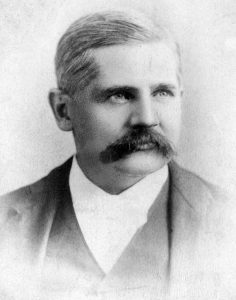 The Isaac M. Jordan Memorial Monument was dedicated in 1929, in Spring Grove Cemetery, Cincinnati. It honors the Founder who is remembered for the 1884 authoring of what is now known as The Jordan Standard, which guides us in the selection of men to invite into the brotherhood of Sigma Chi.
The Isaac M. Jordan Memorial Monument was dedicated in 1929, in Spring Grove Cemetery, Cincinnati. It honors the Founder who is remembered for the 1884 authoring of what is now known as The Jordan Standard, which guides us in the selection of men to invite into the brotherhood of Sigma Chi.
Jordan is remembered also for his high ambition and initiative. He was largely responsible for the establishment of the Gamma Chapter, Ohio Wesleyan, which made possible the preservation of the Fraternity by becoming the parent chapter
in 1858, when Alpha temporarily went out of existence.
Upon his college graduation, Jordan studied law and began a practice in Dayton, Ohio, later moving it to Cincinnati, where he formed a law partnership with his two older brothers. He enjoyed a distinguished law career, and was recognized as a gifted orator. He was elected to Congress in 1882, winning handily as a Democrat in a strongly Republican district.
After Jordan’s tragic death in the Cincinnati office building which housed his law firm, The Cincinnati Enquirer printed this tribute to him: Probably no other man’s death would have caused more general sorrow throughout the city.
Founder Isaac M. Jordan entered the Chapter Eternal December 3, 1890, at age 55.
If you have questions concerning the Jordan Memorial Monument, or you need information on visiting the site, please contact the site’s warden, Arthur L. Dieckmann at (513) 378-1441, or by using the contact form on this website. The cemetery’s phone number is (513) 681-6680.
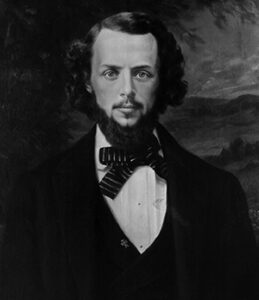 The William Lewis Lockwood Memorial Monument was dedicated in 1932, in Green-Wood Cemetery, Brooklyn, N.Y., and honors the Founder who is remembered as the
The William Lewis Lockwood Memorial Monument was dedicated in 1932, in Green-Wood Cemetery, Brooklyn, N.Y., and honors the Founder who is remembered as the businessman
and organizational expert of the group.
History credits Lockwood’s organizational skills and integrity as largely responsible for the young Fraternity’s ability to survive at the time. His work with Founder Runkle in designing the first badge of Sigma Chi arose out of his skill as an artist and his appreciation of the fine arts.
Years later, Founder Runkle wrote this of Lockwood: Lockwood knew, instinctively, the value and power of money. He was treasurer, and managed the business of the first convention and the first banquet. I understand why we wanted him. He could bring to our ambitious band some things, mental and spiritual, that were sorely needed.
Lockwood’s legal career was interrupted by the Civil War, during which he became a 1st lieutenant and later captain of his company of volunteers. Unable to practice law after the war due to a serious shoulder wound, he formed a company with some associates and entered the wool milling business in Rhode Island, where he, his wife and son, Frank, named for Frank Scobey, had moved in 1864.
Founder William Lewis Lockwood entered the Chapter Eternal August 17, 1867, at age 30, the first of the Seven Founders to pass into the Chapter Eternal.
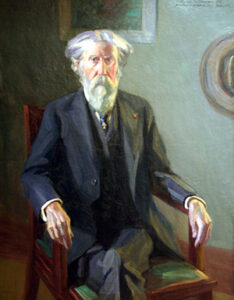 The Benjamin Piatt Runkle Memorial Monument was dedicated in 1923, in Arlington National Cemetery, Arlington, Va., and honors the Founder who is remembered as the most colorful and outspoken of the Seven Founders.
The Benjamin Piatt Runkle Memorial Monument was dedicated in 1923, in Arlington National Cemetery, Arlington, Va., and honors the Founder who is remembered as the most colorful and outspoken of the Seven Founders.
A leader with Founder Scobey in the Delta Kappa Epsilon fraternity rebellion which led to the founding of Sigma Chi, it was Runkle who took the DKE badge off his chest in a dramatic demonstration of courage and tossed it down on a table in front of him.
Runkle, who, with Founder Lockwood, designed the badge of our Fraternity, later explained that its selection grew from an admiration of its meaning.
Runkle enjoyed what was the most distinguished military career of the seven Founders, rising quickly to the rank of major general. He also achieved success in the legal and journalistic professions, and later as an Episcopal priest.
In 1895, Runkle became the Fraternity’s seventh Grand Consul and served for two years, bringing to bear his fine qualities of executive ability and leadership and a soldierly insistence that the governmental regulations and ideals of the Fraternity should be rigidly fulfilled.
Founder Benjamin Piatt Runkle entered the Chapter Eternal June 28, 1916—the Fraternity’s 61st birthday—at age 79.
If you have questions concerning the Runkle Memorial Monument, or you need information on visiting the site, please contact the site’s warden, Mark Evan Dunning at (443) 994-2633, or by using the contact form on this website. The cemetery’s phone number is (703) 607-8000.
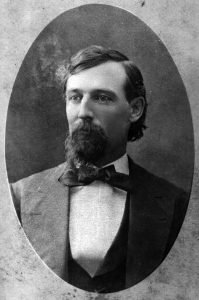 The Franklin Howard Scobey Memorial Monument was dedicated in 1930, in Greenwood Cemetery, Hamilton, Ohio, and honors the Founder who is remembered for his optimism and good cheer.
The Franklin Howard Scobey Memorial Monument was dedicated in 1930, in Greenwood Cemetery, Hamilton, Ohio, and honors the Founder who is remembered for his optimism and good cheer.
Founder Runkle once wrote this of Scobey: Without Frank Scobey I do not believe that Sigma Chi would have succeeded and endured. We had our disappointments, our months of gloom and times when it seemed that we had no chance of success. But Frank Scobey was never discouraged. Always looking on the more hopeful side, his very smile and cheerful words of encouragement gave us new heart.
In the congenial and courteous nature of Scobey was evidenced the commitment to what is now known as The Spirit of Sigma Chi, men of different temperaments, talents and convictions sharing a common belief in an ideal.
It was entirely due to Scobey’s friendship that Founder Lockwood became associated with the Founding of Sigma Chi. With Founder Runkle, Scobey was a leader in the rebellion against the Delta Kappa Epsilon Fraternity.
Scobey, never physically strong, was continuously hampered by various ailments. Yet, even through these afflictions, he radiated hopefulness and good cheer. All who knew him would agree with Founder Runkle that his cheer gave new heart.
Founder Franklin Howard Scobey entered the Chapter Eternal July 22, 1888, at age 51.
If you have questions concerning the Scobey Memorial Monument, or you need information on visiting the site, please contact the site’s warden, Robert F. Raney at (937) 885-1165, or by using the contact form on this website.
Founder Scobey is interred at Greenwood Cemetery in Hamilton, Ohio in the “First East” section, row 597, of the area south of Greenwood Avenue. The cemetery’s phone number is (513) 896-9726.
The Samuel H. Clark Memorial Monument was dedicated in December 1990, in Brookside Cemetery, West Chester, Ohio, and honors a Sigma Chi brother who had little chance on earth to develop a legacy of brotherhood that most of us share. Samuel H. Clark was the brother who unlocked the gates to the Chapter Eternal and became the first brother, at age 21, to pass away. 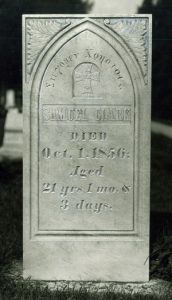
During the summer of 1856, Clark was stricken with typhoid fever. Our Seven Founders provided their outstretched arms for comfort as their brother slipped away October 1, 1856. The final request Clark made was that the White Cross of Sigma Chi be placed upon the stone that marked his final resting place. With this accomplished, Sigma Chi had witnessed an even deeper meaning and growth to its brotherhood.
The original marker is on display at the Founding Site on High Street in Oxford, Ohio. The new memorial is an exact replica of the original.
If you have questions concerning the Clark Memorial Monument, or you need information on visiting the site, please contact the site’s warden, K. Stephen Bailey at (937) 439-1694, or by using the contact form on this website.
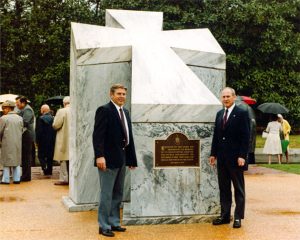 Sigma Chi, like many great movements, has roots in the past. Of vast importance is our heritage taken from the Roman Emperor Constantine and the Constantine Chapter, which was established by Sigma Chi Confederate soldiers during the Civil War.
Sigma Chi, like many great movements, has roots in the past. Of vast importance is our heritage taken from the Roman Emperor Constantine and the Constantine Chapter, which was established by Sigma Chi Confederate soldiers during the Civil War.
During the third century, Rome was engaged in a struggle against the entangling coils of decadence. The entire era was one continuous war, with the army perpetually shifting support from one leader to another.
The confusion and chaos provided opportunity for a strong man to rise to power. Flavius Constantine accepted the challenge.
The historian Eusebius credits Constantine’s eventual success to a mystical experience Constantine had on the eve of the decisive battle with Maxentius. Constantine saw a fiery white cross in the sky and the words In Hoc Signo Vinces,
which means, In this Sign You Will Conquer.
And so it was, 15 centuries later. A great country, this time the United States of America, was torn by tragic civil war. Brother fought against brother, and father fought against son. This young but strong country seemed doomed to complete disintegration.
Out of this disunity, a young Confederate soldier named Harry St. John Dixon assembled a small band of dedicated Sigma Chis in a little log cabin outside Atlanta on Sept. 17, 1864, to conduct an Initiation.
Pledged to high ideals, these men were ready to fulfill them, even when death seemed imminent. From their meeting sprang new hope for reunifying their Fraternity—North and South.
Sigma Chi sought unity, even during intense division. And it would survive the Civil War through the acts of Dixon and his inspiration.
The words In Hoc Signo Vinces
bridged the Mason-Dixon line, and Sigma Chi was united again.
The Emperor Constantine and Harry St. John Dixon, two warriors separated in time by centuries, were joined by the White Cross in the spirit of brotherhood eternal.
Near the site of the Constantine Chapter meeting place is a beautiful marble memorial monument in the shape of a Sigma Chi badge.
Read more about the Constantine Chapter and the creation of the Constantine Memorial in this PDF by Ralph McGill, Vanderbilt 1921, Pulitzer Prize winner and former columnist and editor of The Atlanta Constitution.
If you have questions concerning the Constantine Chapter Memorial Monument, or you need information on visiting the site, please contact the site’s warden, Robert S. Petry at (706) 882-4816, or by using the contact form on this website.
The Harry St. John Dixon burial place is marked by an impressive memorial in Mountain View Cemetery, Fresno, Calif., where Dixon had settled in his later years.
The war over and his fortune lost, Dixon came west to the young and robust county named for the ash tree—Fresno. He was to become its fifth county clerk, and he was to serve it and Sigma Chi well, until his death.
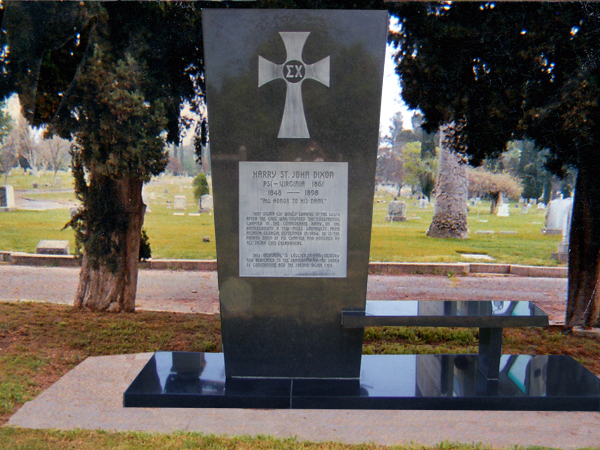
In addition to being the founder of the Constantine Chapter of Sigma Chi, he was the first member elected to General Fraternity office, serving as the first Grand Historian from 1872-82.
He was the author of the 1886 Ritual and was the founder of the Alpha Beta Chapter, California–Berkeley, and the Alpha Omega Chapter, Stanford.
Dixon was survived by his widow, whose name, appropriately, was Connie, or Constance. One warm summer’s night almost 34 years to the day after the founding of the Constantine Chapter of Sigma Chi, she sat down to write: My dear and noble husband, Harry St. John Dixon, passed peacefully away from life during the midnight hours of last Saturday morning, August 27. We laid his poor tired body to rest beside that of his father in Fresno. His love for the Order and his interest in its welfare continued, unabated, as long as consciousness remained.
If you have questions concerning the Dixon Memorial Monument, or you need information on visiting the site, please contact the site’s warden, Samuel P. Mann at (559) 477-9508, or by using the contact form on this website. The cemetery’s phone number is (559) 233-3327
In honor of John Stafford McMillin, Sigma Chi’s first Grand Consul, stands an impressive  mausoleum in the Roche Harbor Cemetery in Roche Harbor, Wash.
mausoleum in the Roche Harbor Cemetery in Roche Harbor, Wash.
Born October 18, 1855, on a farm near Sugar Grove, Ind., McMillin and his brother, William, entered DePauw University, then known as Indiana Asbury, where both joined Sigma Chi.
While still in college, McMillin began advocating a centralized form of government of Sigma Chi, with Grand Offcers, Grand Council and Executive Committee, to replace the parent chapter
form of government. In 1882, this transformation was made by the 14th Grand Chapter and McMillin became the Fraternity’s first Grand Consul.
Elected at age 27, he was the youngest man to serve as Grand Consul. During McMillin’s term of office, the White Cross had entered the universities of Iowa, Nebraska and Kansas, these three being the only Sigma Chi chapters west of the Mississippi River. He aided in the extension which installed three chapters in California, all by 1891. He had much to do with founding the chapters at Washington, Washington State and Whitman.
An outstanding lawyer and a successful businessman, McMillin was president and general manager of the Roche Harbor Lime Company. He entered the Chapter Eternal November 3, 1936.
The John S. McMillin Memorial Monument is listed on the National Register of Historic Places, U.S. Department of the Interior.
If you have questions concerning the McMillin Memorial Monument, or you need information on visiting the site, please contact the site’s warden, John F. Thompson at (206) 972-3031, or by using the contact form on this website.
At the gravesite of Joseph Cookman Nate, the Fraternity, on behalf of numerous  donors, erected a special monument in his honor. Nate served the General Fraternity as Grand Consul, Grand Quaestor, Grand Tribune, Grand Historian and Grand Trustee.
donors, erected a special monument in his honor. Nate served the General Fraternity as Grand Consul, Grand Quaestor, Grand Tribune, Grand Historian and Grand Trustee.
Widely referred to as the Eighth Founder,
Nate was a Grand Officer of the Fraternity for more than 40 years and wrote the monumental four-volume History of the Sigma Chi Fraternity.
At the time of his passing, Nate was serving as Grand Historian and Grand Tribune (then Visitation Officer), and knew hundreds of living Sigma Chis personally.
Initiated into the Alpha Iota Chapter at Illinois Wesleyan on March 14, 1885, Nate promptly became immersed in Sigma Chi affairs and remained so throughout his long and productive life.
Upon his college graduation in 1890 he was elected Grand Quaestor, only to find an empty treasury, large indebtedness, and small income. He faced the situation squarely, beginning to lay the foundation for a complete financial system at once. Before the end of his nine-year term he had the Fraternity’s finances well in hand.
A devoted minister, he was a devout and truly dedicated Sigma Chi. He entered the Chapter Eternal July 30, 1933.
If you have questions concerning the Nate Memorial Monument, or you need information on visiting the site, please contact the site’s warden, Sean M. Boston at (309) 532-0085, or by using the contact form on this website. The cemetery’s phone number (309) 827-6950.
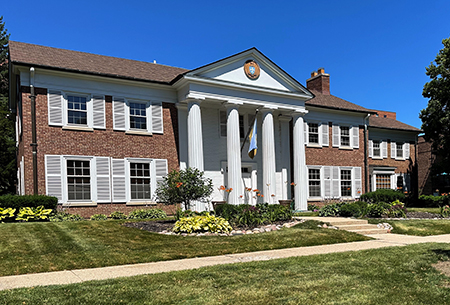 The J. Dwight Peterson International Headquarters is owned by the Sigma Chi Foundation and is the location of the Fraternity and Foundation administrative operations, museum, and staff offices. It is open to members and pledge brothers, along with their friends and families, and the general public, during regular business hours, or at other times by special arrangement with the staff.
The J. Dwight Peterson International Headquarters is owned by the Sigma Chi Foundation and is the location of the Fraternity and Foundation administrative operations, museum, and staff offices. It is open to members and pledge brothers, along with their friends and families, and the general public, during regular business hours, or at other times by special arrangement with the staff.
All of the important historical items of the Fraternity are on display in the Chuck and Kim Watson Museum of Sigma Chi, including the original Sigma Phi badge of Founder Daniel William Cooper and a replica of the Constantine Chapter badge fashioned by Harry St. John Dixon. Created with the goal of crafting a modern museum experience for the brothers of Sigma Chi, the new museum concept team was led by 63rd Grand Consul, Lee Beauchamp, Texas A&M College Station 1975 and consisted of past Grand Historians, Dr. Michael Codina, M.D., Calif. San Diego 1993, Dr. William P. Fleming, Ph.D., Sam Houston 1964, Eric Hanson, Cincinnati 1989, and Douglas R. Carlson, Minnesota 1973, along with the Fraternity’s archivist/curator, Dr. Noah Phelps, Ph.D., Northwestern 2008. Design and construction of the new museum’s exhibits was placed in the hands of Jerry Spangler, Dayton 1989, VP of Exhibit Concepts, Inc., and opened in 2016.
The headquarter also houses, the Fred Millis Library which holds a sizable collection of publications written by or about Sigma Chis as well as numerous Fraternity-related works.*
In the front yard of the Headquarters is the Freedom Garden. Shaped as an infinity symbol, it is dedicated to all brothers who have served in the Armed Forces of the United States, Canada, and others, and in so doing put their lives on the line for the cause of freedom.
*Note: the library is not open for browsing, but a list of publications is available on request.
To arrange a visit, please call the receptionist at 847-869-3655 x200. If you have questions concerning the J. Dwight Peterson International Headquarters, please contact The Sigma Chi Historical Initiative by using the “Ask the Archivist” category on the contact form on this website.
